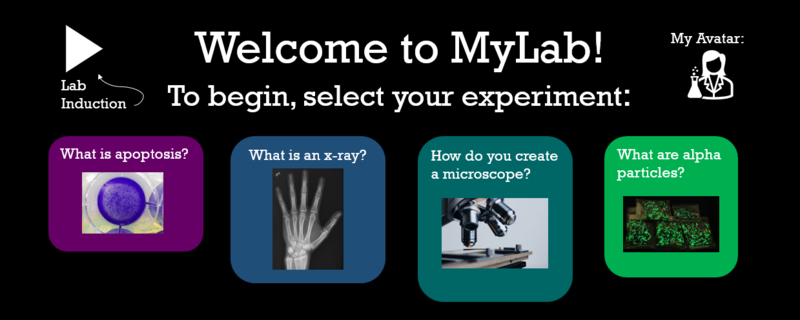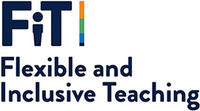To begin, select your experiment
Read Jannat Khan's highly commended submission
In Hilary term 2022, students at all levels of study at Oxford were invited to enter the Imagining the Future of Digital Education writing competition.
Entrants submitted news articles telling fictitious stories of the future of digital learning at Oxford, with all submissions helping to inform the University’s new Digital Education Strategy.
Jannat Khan's entry was highly commended by the judging panel. Here is her submission. You can also view all competition winners.
To begin, select your experiment
Science and Technology
Jannat Khan
Thursday 26 February 2026: 13:14 GMT
The creation of ‘MyLab’, a virtual laboratory app designed by students with staff support at the Department of Oncology has not only supported student engagement and increased confidence in technical skills but is also inspiring young people to become the next generation of scientists. The app recently won the ‘Best Teaching App 2026’ award. The virtual laboratory hosts a range of experiments from managing equipment such as x-ray machines, to performing intricate assays. Each scenario provides the opportunity to analyse the results using easy to understand coding tutorials. They were guided by a team of computer scientists, biologists, and physicists to accurately replicate the experiments on the platform.
The app was created by a multidisciplinary team of five students who were concerned about the effect of remote learning on learning technical skills in the laboratory. They said that they wanted the app “to provide equal opportunities to students to pursue science holistically, participate in different experiments and explore their interests in a compact and accessible manner”.
When asked what inspired them to develop the app, the team took us through their experience of studying during the pandemic, and how learning from a screen made it difficult to achieve an intricate and in-depth perception of the experiments. They told us about how the various modules on an MSc programme encouraged them to learn many technical skills but how the lack of access and opportunity to practice made it difficult for them to strengthen these skills. The team added that “the virtual laboratory is the perfect compromise between learning at home and developing a professional skillset. It allows independence in a lab, access to experiments beyond the syllabus which is relevant in stimulating interest in new fields”.

The MyLab interface appears as a black background with several colorful buttons that users may select. The buttons include a 'lab induction' play button, a 'My Avatar' button with an example avatar, a 'What is apoptosis?' icon with an image of a clonogenic assay, a 'What is an x-ray?' button with an x-ray image of a hand, a 'How do you create a microscope?' button with an image of a microscope, and a 'What are alpha particles?' button with an image of radium sources.
Figure 1 - The user interface of MyLab, which hosts a range of virtual experiments to allow students to experience the laboratory environment and gain technical skills.
The laboratory consists of an interface as shown above, which lists a range of experiments. One option included: ‘what is apoptosis?’, which we found to be a cell death mechanism the body uses to protect itself. After clicking on the experiment, it brings you to the lab where you can perform a clonogenic assay, a technique that targets ionising radiation at a cell line to understand DNA damage. The interactive element allows you to move the Petri dishes, pipette the cells and use a beam to direct the radiation. The flexibility of the app enables you to alter the experiment completely, by choosing different cell types, changing the dose of radiation and the time period of the experiment. After the experiment has finished, the student has the option to collate the data and perform analysis using programmes such as R, where a tutorial is provided to support the user in performing data analysis. A unique feature of this app includes an ‘Ask a Scientist!’ button which encourages the user to input their questions to gain a better understanding of the experiment. Not only does this promote interaction and mentorship between Oxford Scientists and aspiring scientists, but it also cultivates creativity and curiosity. Despite the user interface hosting a single user at a time, the students are able to connect their experiments to collaborate remotely across the digital lab setting.
The experiment we explored is now taught to students on the MSc Radiation Biology course. One student stated, ‘the exposure to the virtual lab allows me to apply my knowledge of ionising radiation to clonogenic assays to understand the relevance of concepts such as fractionation’. This is supported by an MSc lecturer who said: ‘The app provides exposure to key scientific skills and boosts confidence in the students as they prepare for their dissertations allowing an easier transition to wet lab or computational research.’ The success of the app is supported by a 2025 study that explored the benefits of the virtual laboratory and found that students who used the app for a minimum of sixteen hours during the Michaelmas term scored on average, 12% higher in their qualifying exam.
The app has taken steps to be inclusive of different learning styles, some examples include an audio file attached to each experiment dictating the steps. The platform also has a ‘lab induction’ and guiding arrows to support the user regardless of proficiency. Another notable feature enables users to design their own lab coat-adorned avatars with customisable features such as hair/skin tone/gender/mobility aids. When asked why this was included, the group responded: ‘science is for everyone, and we want to encourage that with the tiniest details’.
The success of the platform will be accelerated as the app expands to include other departments to support undergraduate study. Recently, the team collaborated with student ambassadors to visit local schools as part of their ‘life of a scientist’ public engagement programme. They navigated the app with secondary school students to introduce them to projects the University of Oxford is currently working on. A questionnaire found that 89% of students will use the app again to explore other experiments. The team hope to create a version for younger children with experiments such as monitoring plant growth by adjusting variables such as water and light.

Contact us
If you have a query, please contact us at
Stay informed


